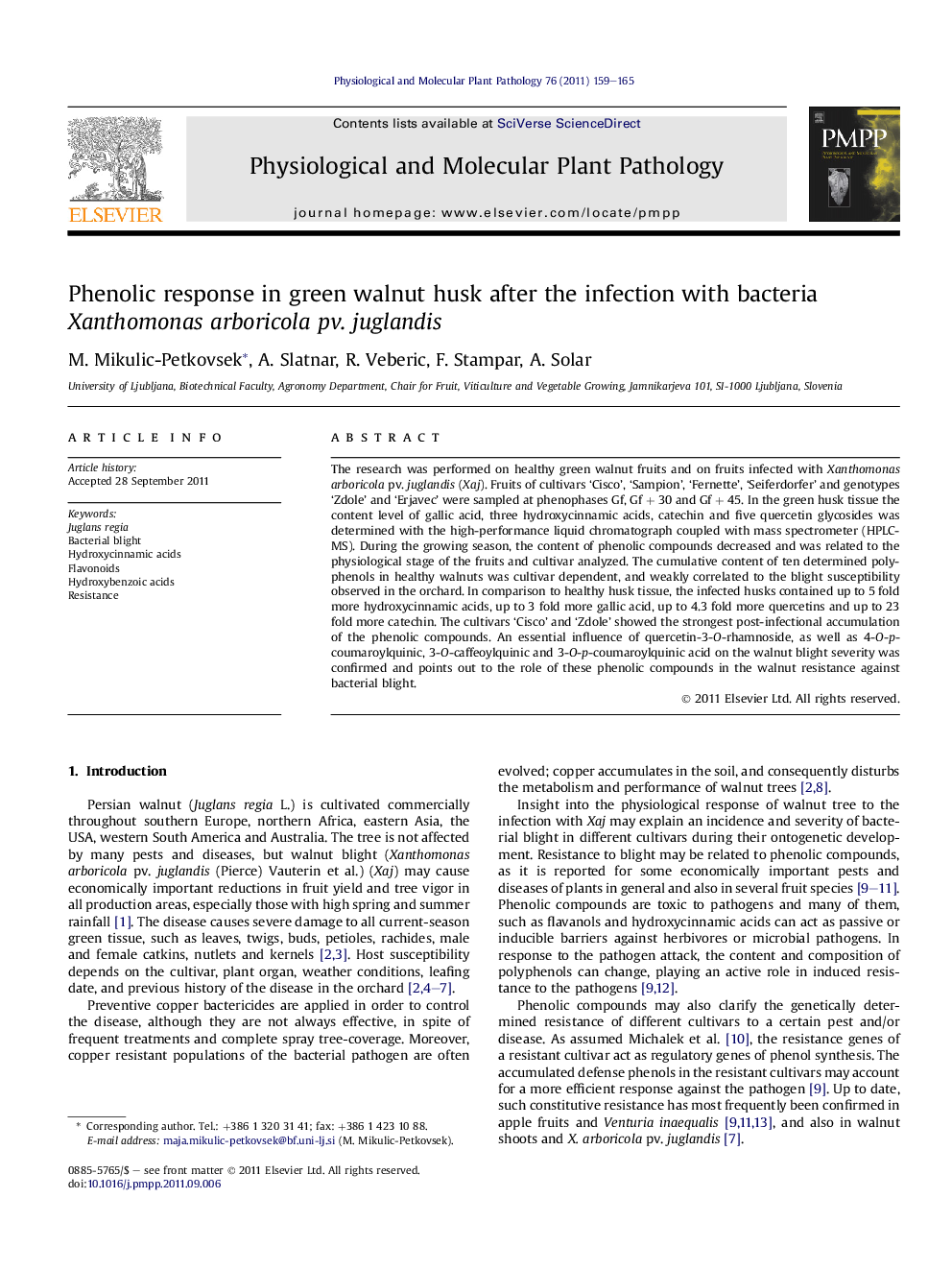| Article ID | Journal | Published Year | Pages | File Type |
|---|---|---|---|---|
| 2836528 | Physiological and Molecular Plant Pathology | 2011 | 7 Pages |
The research was performed on healthy green walnut fruits and on fruits infected with Xanthomonas arboricola pv. juglandis (Xaj). Fruits of cultivars ‘Cisco’, ‘Sampion’, ‘Fernette’, ‘Seiferdorfer’ and genotypes ‘Zdole’ and ‘Erjavec’ were sampled at phenophases Gf, Gf + 30 and Gf + 45. In the green husk tissue the content level of gallic acid, three hydroxycinnamic acids, catechin and five quercetin glycosides was determined with the high-performance liquid chromatograph coupled with mass spectrometer (HPLC-MS). During the growing season, the content of phenolic compounds decreased and was related to the physiological stage of the fruits and cultivar analyzed. The cumulative content of ten determined polyphenols in healthy walnuts was cultivar dependent, and weakly correlated to the blight susceptibility observed in the orchard. In comparison to healthy husk tissue, the infected husks contained up to 5 fold more hydroxycinnamic acids, up to 3 fold more gallic acid, up to 4.3 fold more quercetins and up to 23 fold more catechin. The cultivars ‘Cisco’ and ‘Zdole’ showed the strongest post-infectional accumulation of the phenolic compounds. An essential influence of quercetin-3-O-rhamnoside, as well as 4-O-p-coumaroylquinic, 3-O-caffeoylquinic and 3-O-p-coumaroylquinic acid on the walnut blight severity was confirmed and points out to the role of these phenolic compounds in the walnut resistance against bacterial blight.
► Defense mechanisms and reactions of walnut fruits against bacterial attack. ► Polyphenolic patterns in healthy and Xaj infected young fruit tissue. ► Relationships between the levels of phenolics in green walnuts and Xaj resistance. ► Researching the plant–pathogen interactions. ► Identifying walnut cultivars with potential built in resistance on molecular level.
